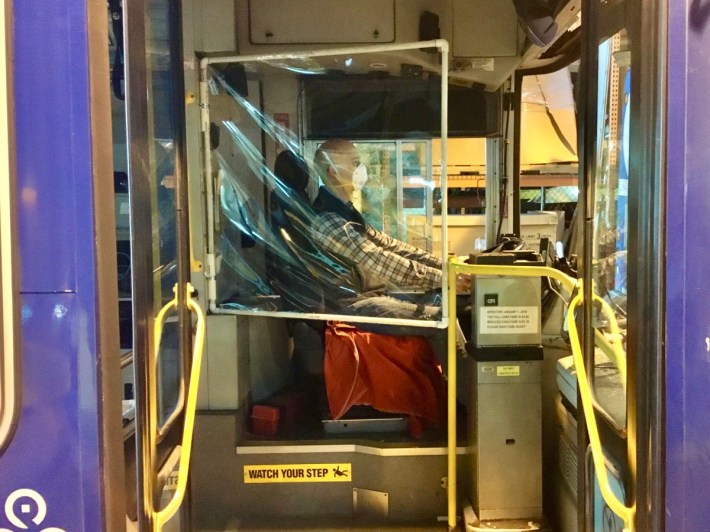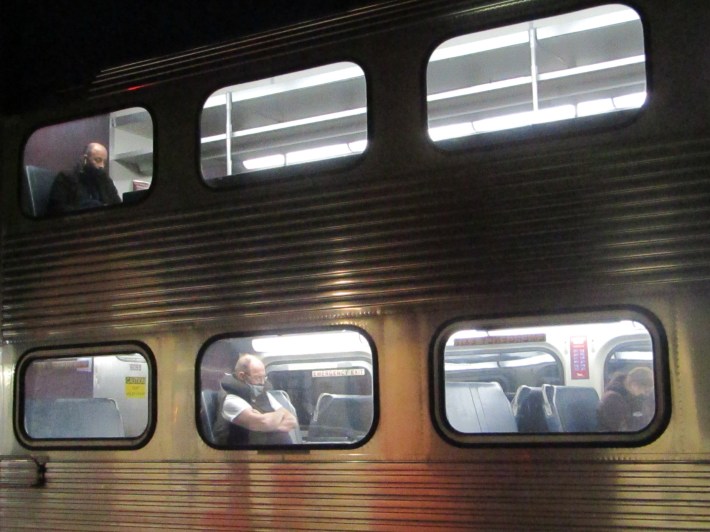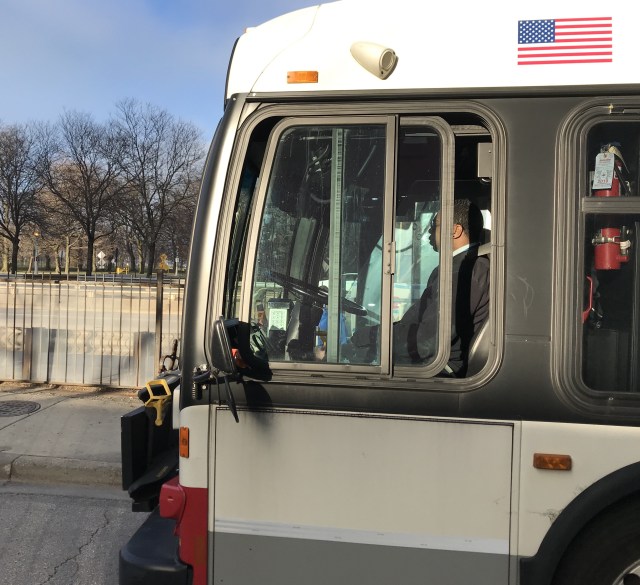During the COVID-19 pandemic, at least 1,874 Chicago area transit workers tested positive for the disease, at least 14 had to be hospitalized and at least 14 passed away, according to numbers provided by the CTA, Metra, and Pace.
As with other professions that can't be done remotely and require in-person interactions with other people, a certain amount of risk was inevitable, especially for CTA and Pace bus and paratransit drivers, and most Metra train conductors, who must breathe the same air as passengers. The transit agencies have tried to mitigate that risk by providing employees (and, in some cases, riders) with masks, installing plexiglass shields on buses, requiring riders to wear masks, and encouraging social distancing at the stations and inside the vehicles.
As someone who doesn’t drive, I’m among the transit-dependent riders who have made up a larger-than-usual portion of local transit ridership during COVID, and who benefit from transit workers taking on increased exposure in the line of duty. With the first anniversary of the start of Illinois' Stay at Home order (March 21) on the horizon, I tried to get a sense of the toll the pandemic took.
The picture that emerged was incomplete. The CTA and Pace haven't provided any information on how many employees were hospitalized, and BNSF Railway and Union Pacific Railroad declined to provide any numbers for the commuter rail lines they operate for Metra. But the numbers that are available suggest that the CTA had the greatest number of workers infected by COVID, with Pace coming in distant second and Metra a close third. And with public transit employees already eligible for COVID-19 vaccines, the transit agencies are working with local governments to get their employees inoculated.
COVID-19 risks
Obviously transit employees don't just include front-line workers like bus drivers and train conductors. Train operators, vehicle mechanics, other maintenance workers, ticket agents, customer service agents, and office employees have all tested positive for the coronavirus.
In the the spring of 2020, CTA and Pace had riders board the buses through the rear doors until plexiglass shields could be installed at the front and/or case numbers dropped. Paratransit vehicle drivers also regularly help passengers with mobility issues board and disembark form their vehicles.

Between April and early June, conductors didn’t check tickets on any Metra lines. While conductors on most Metra lines resumed ticket checks in June, conductors on the Union Pacific-operated lines still don’t even walk through the trains, let alone check tickets, due to the railroad's current feud with Metra. During my February 25 round trip on the Union Pacific North line, I did see conductors go through the train to check some mechanical issues, clad in masks and face shields, but they still didn’t check tickets.
Positivity rates and deaths
According to a CTA statement, as of February 25, 1,256 employees, or a little over 11 percent of the transit agency’s workforce, tested positive for COVID. While it didn’t elaborate on whether any of them were hospitalized, it stated that “Sadly, 10 of the employees who tested positive have since passed away.”
Metra spokesperson Michael Gillis said that, as of February 16, 313 employees tested positive and five were awaiting testing and “presumed positive.” At the time, 289 of those employees had returned to work. 14 cases required hospitalization, and two employees died. Gillis said that he didn’t have the breakdown by train line.
Those figures don’t include conductors, ticket agents and transit workers from the BNSF, Union Pacific North, Union Pacific Northwest and Union Pacific West lines, since they work for those railroads rather than Metra. A rail industry professional previously told Streetsblog that two ticket agents at Ogilvie Transportation Center, who were Union Pacific employees, died of COVID-19 during the early days of the pandemic.

Union Pacific spokesperson Elizabeth Graham acknowledged that there have been positive test results and deaths among employees working on the Metra lines, but said that she wasn’t at liberty to share any numbers. “We have had employees who have reported positive COVID-19 tests. We have also had employees who have passed away during the COVID-19 pandemic.”
Graham said that “limiting the amount of close contact the employees and the public have with each other” is just one of the many measures Union Pacific is taking to protect its employees, along with the steps Metra is also taking, “providing PPE, reminding passengers to wear masks, deep cleaning passenger cars [and] providing safe and socially distanced fare verification.”
BNSF Railway spokesperson Courtney Wallace simply said that her employer doesn’t release COVID-19 numbers.
Pace, on the other hand, has maintained a regularly updated list of how many of its employees have tested positive, when was the last time they worked and which division or provider they work for. As of February 26, 305 employees tested positive, and one paratransit employee passed away in April 2020. While most of them were bus/paratransit vehicle drivers, it also included 24 maintenance workers and 74 administrative employees (12 of whom worked at Pace headquarters). Overall, 127 employees worked on the paratransit side.
Assuming the standard 14-day quarantine period after testing positive, at least six employees – four bus drivers for regular routes and two paratransit drivers – were still out sick at the time. Pace spokesperson Maggie Daly Skogsbakken said that the transit agency doesn’t keep track of the medical information about the employees, so while they know how long an employee took to return to work, they don’t know whether an employee required hospitalization.
Prevention and vaccinations
With transit employees eligible for vaccinations throughout Illinois since the last week of January, the CTA is encouraging its workers to get vaccinated through their healthcare provider or a local pharmacy. The agency also teamed up with the City of Chicago to set up free vaccination sites at various work locations.
With Metra and Pace, the situation is trickier, since their employees come from all across the six-county region, and in some cases beyond. Daly Skogsbakken said that Pace has been “sharing vaccination information in internal newsletters, our internal communications portal, and on-site signage” in order to “educate and encourage” their employees. She said that the transit agency has also been working with state, city and municipal governments to reserve spots for its employees.
“Kane County recently had openings and invited our frontline staff in Aurora and Elgin, and the city of Chicago has been working with us to schedule appointments for ADA operators,” Daly-Skogsbakken added.
The freight railroads, on the other hand, are leaving vaccinations entirely in their employees’ hands. Wallace said that BNSF “share[s] information with employees about opportunities to register for vaccinations as applicable and available in their specific locations,” and that the company has been lobbying to ensure that railroad workers in general get priority when it comes to available vaccines.
Graham said that Union Pacific is encouraging, but not requiring, its employees to get vaccinated. "We are pleased that some public transit workers are eligible to be vaccinated under Phase 1B of the COVID-19 vaccination program, and hope our employees take advantage of this opportunity,” she said.





